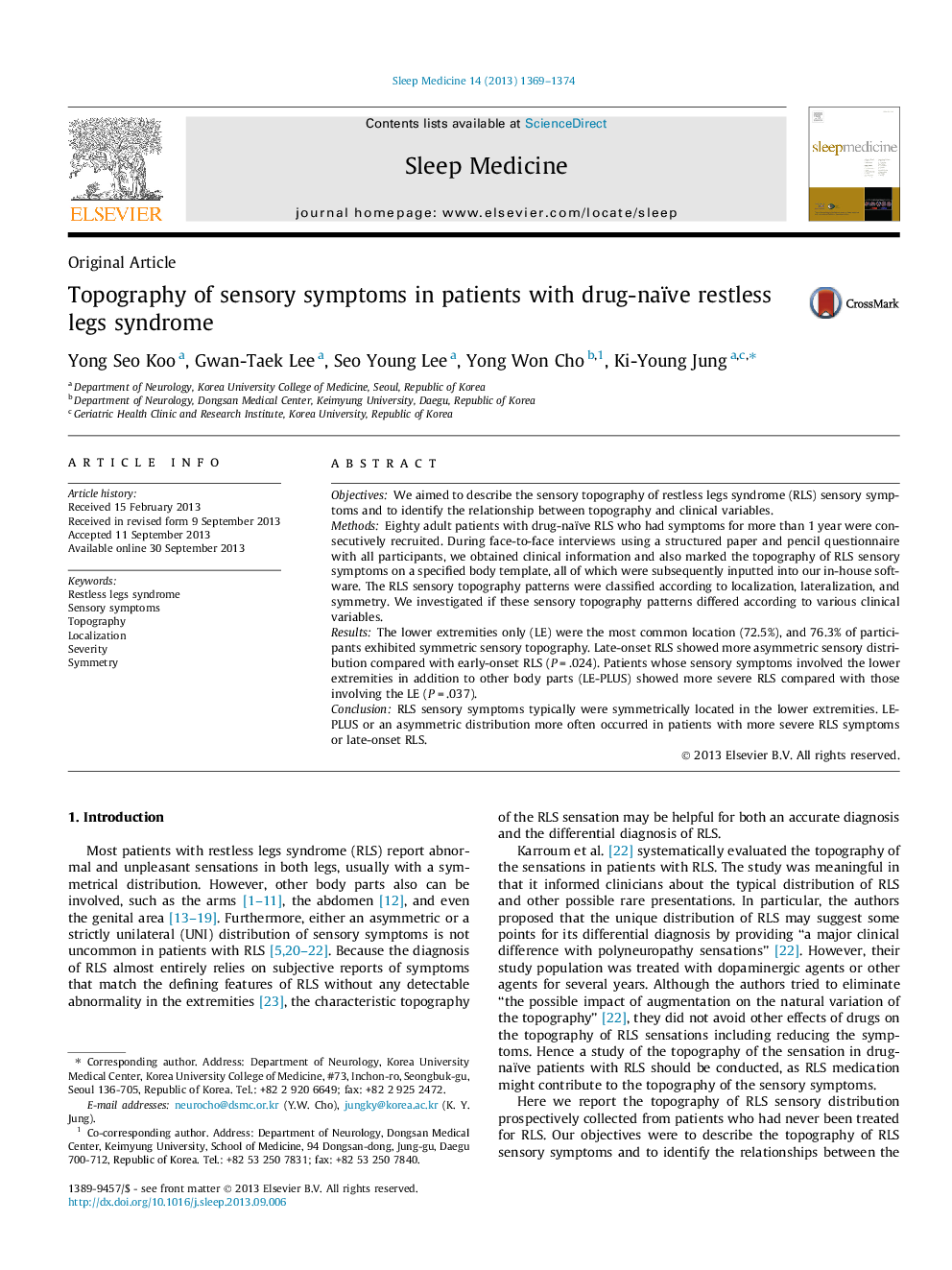| کد مقاله | کد نشریه | سال انتشار | مقاله انگلیسی | نسخه تمام متن |
|---|---|---|---|---|
| 6061044 | 1200253 | 2013 | 6 صفحه PDF | دانلود رایگان |

- Topography of sensory symptoms was evaluated in restless legs syndrome (RLS) patients.
- Sensory symptoms of RLS mostly occur on the lower extremities.
- Most of the symptoms are symmetric in their distribution.
- Patients with symptoms in their upper extremities have more severe symptoms.
- Patients with late-onset RLS show more asymmetric distribution.
ObjectivesWe aimed to describe the sensory topography of restless legs syndrome (RLS) sensory symptoms and to identify the relationship between topography and clinical variables.MethodsEighty adult patients with drug-naïve RLS who had symptoms for more than 1Â year were consecutively recruited. During face-to-face interviews using a structured paper and pencil questionnaire with all participants, we obtained clinical information and also marked the topography of RLS sensory symptoms on a specified body template, all of which were subsequently inputted into our in-house software. The RLS sensory topography patterns were classified according to localization, lateralization, and symmetry. We investigated if these sensory topography patterns differed according to various clinical variables.ResultsThe lower extremities only (LE) were the most common location (72.5%), and 76.3% of participants exhibited symmetric sensory topography. Late-onset RLS showed more asymmetric sensory distribution compared with early-onset RLS (PÂ =Â .024). Patients whose sensory symptoms involved the lower extremities in addition to other body parts (LE-PLUS) showed more severe RLS compared with those involving the LE (PÂ =Â .037).ConclusionRLS sensory symptoms typically were symmetrically located in the lower extremities. LE-PLUS or an asymmetric distribution more often occurred in patients with more severe RLS symptoms or late-onset RLS.
Journal: Sleep Medicine - Volume 14, Issue 12, December 2013, Pages 1369-1374